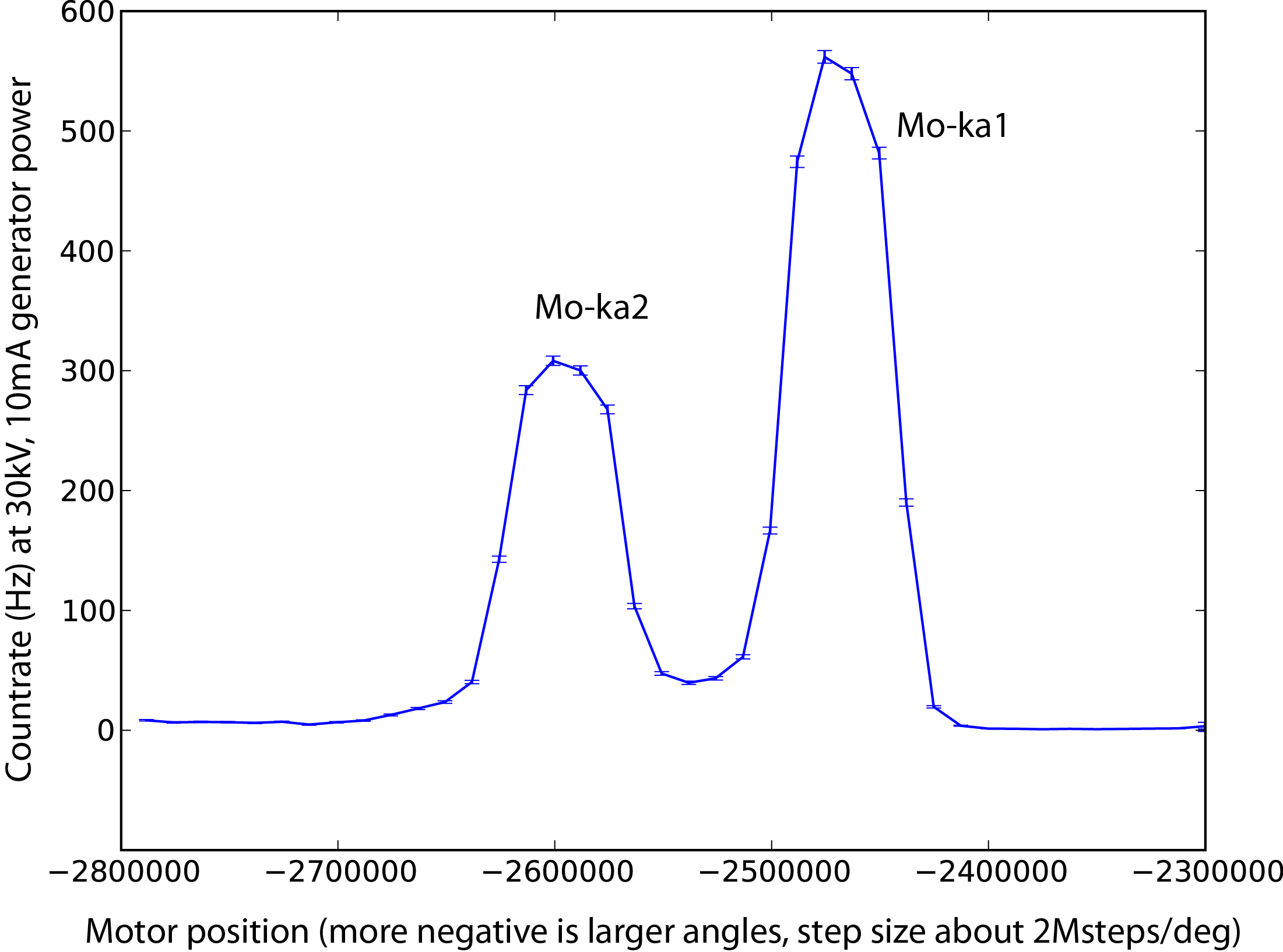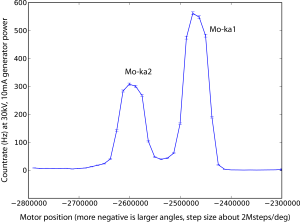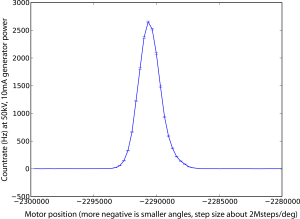
Ok, so let’s start with the disclaimer: very initial results (fresh off the instrument, hence the delay), and the primary beam intensity is still very, very weak (flux at sample position: ~5kHz, at 10% generator power). Background detection level is typically on the order of 1 Hz.

Nevertheless, there is a beautiful spectrum from the first crystal, clearly separating molybdenum k-alpha 1 and k-alpha 2 excitations (Figure 1). Besides that, the scan from the second (analyser) crystal shows a very sharp direct beam profile. The rotation stage resolution appears to be a factor of 100 better than they need to be. All I can hope for now is that I can measure strongly scattering samples. Because with this beam intensity, anything less than that will be impossible to measure.

Next, I may need to think of ways of improving the beam intensity. Starting with parallelisation optics may be a good idea, I also still have the option of changing the anode from point-focus to line-focus. Any comments or recommendations are —as always— very welcome!

Leave a Reply